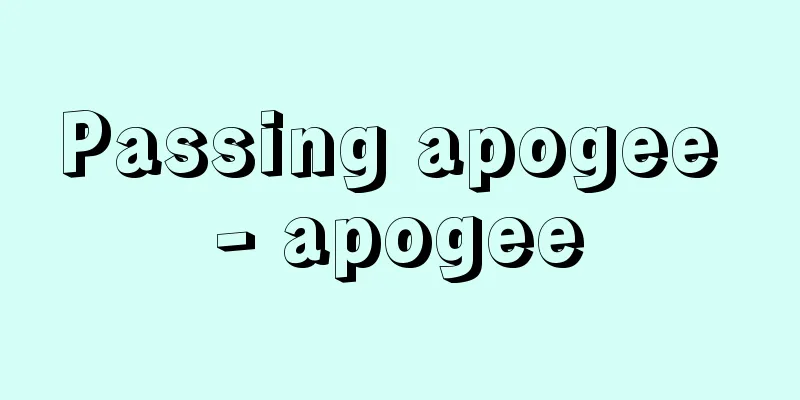"Thoughts on the snail"

|
…The word kanamu (snail), which was known in ancient times, is not found in Kyoto today, but remains in mountainous areas and near the eastern and western ends of the Japanese archipelago, while the newly coined words dendenmushi and maimai (snail) occupy a wide area in areas with good transport links and cultural exchange, such as the Kyoto-Osaka region and flat areas. The dialect distribution shows the process of change from the old to the new as an existence form from the center of cultural development to the periphery, and the “dialect periphery theory” was explained in Yanagita Kunio's “Kagayaku” (Thoughts on the Snail), which mainly used the kanamu dialect as material, and became a method of linguistic history research. This method is effective for dialect changes that are easy to adopt new words such as children's words. … From [Linguistic Geography]...The results of a survey of colloquialism, published in the Report on the Survey of Colloquialisms and Distribution Map of Colloquialisms (1906), showed that Japanese dialects were divided into east and west along a line connecting Oyashirazu and Lake Hamana. Next, Kunio Yanagita published Thoughts on the Snail (1930), proposing the theory of dialect peripheries based on a survey of the geographical distribution of slang for snails. After the war, the National Institute for Japanese Language and Linguistics published six volumes of the Japanese Language Map (1967-75), providing a substantial foundation for the study of Japanese linguistic geography. Dialects [Takeshi Shibata]... From [Japanese Linguistics]…In the latter half of the 1930s, research on accents made a breakthrough. Around that time, Kunio Yanagita's "Thoughts on the Snail" was published as a book, and his theory of dialect circles attracted the attention of the academic community. A little later, French linguistic geography was introduced. … *Some of the terminology explanations that refer to "Thoughts on the Snail" are listed below. Source | Heibonsha World Encyclopedia 2nd Edition | Information |
|
…時期的に古く知られたカタツムリの語が,現代では京都になくて山間部や日本列島の東西の端に近く残り,京阪地方や平たん部など交通が便で文化が交流しやすい土地では,新しい造語とみられるデンデンムシやマイマイが広い範囲を占めている。この方言分布からその新旧の変遷過程が,文化発展の中心から周辺へという存在形態として現れるとする〈方言周圏論〉が,このカタツムリ方言を主材料とした柳田国男の《蝸牛考》に説かれ,言語史研究上の一方法とされることとなった。この方法は童詞のような新語を採用しやすい方言の変遷に有効といえる。… 【言語地理学】より…口語法の調査の結果である《口語法調査報告書・口語法分布図》(1906)によって,親不知(おやしらず)と浜名湖を結ぶ線で日本の方言が東西に分かれることがわかった。ついで,柳田国男はカタツムリの俚言(りげん)の地理的分布調査から方言周圏論を唱えて《蝸牛考(かぎゆうこう)》(1930)を著し,戦後になって国立国語研究所から《日本言語地図》6巻(1967‐75)が刊行されて,日本の言語地理学の実質的基礎ができた。方言【柴田 武】。… 【国語学】より…1930年代の後半に至って,アクセントの研究が画期的な飛躍をとげた。また,そのころ,柳田国男の《蝸牛考(かぎゆうこう)》が成書として世に送られ,その方言周圏論が学界の関心を集めた。やや遅れて,フランスの言語地理学が紹介された。… ※「《蝸牛考》」について言及している用語解説の一部を掲載しています。 出典|株式会社平凡社世界大百科事典 第2版について | 情報 |
Recommend
Jikuhoran
Date of birth and death unknown. Legend has it th...
Jun Ishihara
Born: January 15, 1881 in Tokyo [Died] January 19,...
Auer body (English spelling)
…These immature leukemia leukocytes often show at...
Tarsius bancanus (English spelling)
… [Takashi Furuichi]. . … *Some of the terminolog...
Toyonaka [city] - Toyonaka
Located in the north of Osaka Prefecture, Osaka Ci...
Miyabi
Court-like, urban-like, elegant, refined, graceful...
Victoria de Los Angeles
1923‐ Spanish soprano. Studied at the Barcelona Co...
Reference group
…But society also serves as a kind of frame of re...
Current account balance
This refers to the total of the trade balance, non...
Limited Partnership Company - Kabushiki Goushigaisha
A company consisting of unlimited liability partne...
Theory of motion - Exercise
… If we trace the origins of all Western academic...
General bankruptcy law
...This is the current law. This law became indep...
Takamasa Mitani
Educator and philosopher. Born in Kanagawa Prefec...
Bloom, H.
…As if to make up for the current stagnation in t...
Ngo Dinh Diem (English spelling)
1901‐63 The first president of the Republic of Vie...









